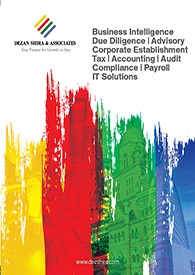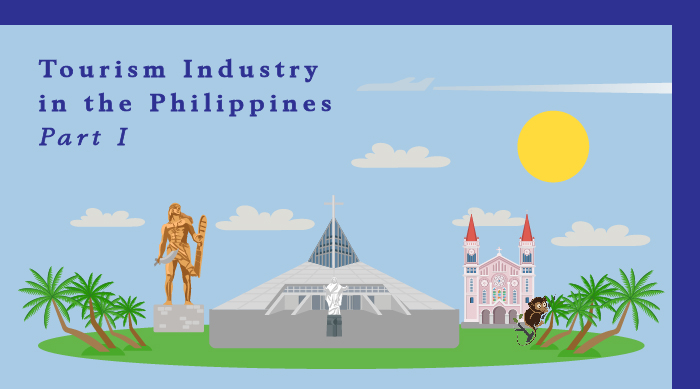Tourism Industry in the Philippines: Part I
Op-ed by Bob Shead
In this article, I would like to attempt to cover the main aspects of the Philippine Tourism Industry and the potential for investment. The tourism industry was worth approximately 8.6 percent of the country’s Gross Domestic Product (GDP) in 2016, compared to 8.2 percent in 2015. Foreign investment in the tourism industry in 2016 was P184 billion (US$3.7 billion) and was mainly into 20 major projects involving resorts and hotels. Employment in the Philippine tourism sector is currently just over 5 million workers. Compared to the previous year, the monthly figures for tourist arrivals has increased by 5.5 percent in 2017, with the current monthly figures at Philippine airports standing at 580,000 travelers. This will give an annual projected figure of 7 million tourist arrivals by air for 2017.
 RELATED: Corporate Establishment Services from Dezan Shira & Associates
RELATED: Corporate Establishment Services from Dezan Shira & Associates
Philippines Tourism Overview as part of GDP
According to the Philippine Statistics Authority (PSA), as measured by the share of Tourism Direct Gross Value Added (TDGVA) to total GDP, the contribution of tourism to the economy was estimated at 8.6 percent in 2016. The TDGVA amounted to P1243 billion (US$25 billion) in 2016, higher by 13.7 percent compared to previous year’s P1093 billion (US$22 billion).
The TDGVA estimate is based on the latest results of the Philippine Tourism Satellite Accounts (PTSA) which also provides information on tourism expenditure and employment. The following are the other key results from PTSA:
- Inbound tourism expenditure, which refers to the expenditure of non-resident visitors (foreign visitors and Filipinos permanently residing abroad) within the Philippines, grew by 2.3 percent in 2016, amounting to P313.6 billion (US$6.3 billion) from P306.6 billion (US$6.13 billion) in 2015. Compared to the country’s total exports, the share of inbound tourism expenditure was 7.7 percent. Inbound tourism ranked third among the biggest export items in 2016.
- Domestic tourism expenditure, which includes expenditure of resident visitors within the country either as domestic trip or part of an international trip, grew by 19.1 percent, from P1770.7 billion (US$35.4 billion) in 2015 to P2108.2 billion (US$42.2 billion) in 2016. Domestic tourism expenditure represented 19.8 percent of the Household Final Consumption Expenditure (HFCE) in 2016.
- Employment in the tourism-related industries was estimated at 5.2 million in 2016, higher by 5.1 percent compared to 5 million in 2015. Share of employment in tourism-related industries to total employment in the Philippines was recorded at 12.8 percent in 2016.
(Source: Department of Tourism and Tourism Infrastructure and Enterprise Zone Authority)
Investment in the Philippine Tourism Industry is managed by the Tourism Infrastructure and Enterprise Zone Authority (TIEZA), a government corporation, created by the Tourism Act of 2009 and is under the Department of Tourism (DOT). The current annual budget of DOT (including TIEZA) is P2.5 billion (US$50 million). It is anticipated that in light of increasing tourism to the Philippines, this budget will increase during the next financial year.
TIEZA acts as the DOT’s implementation arm, and provides a support infrastructure that facilitates investments in Tourism Enterprise Zones (TEZ) throughout the Philippines. The main functions of TIEZA are: Infrastructure Development and Designation; Regulation and Supervision of TEZ areas; Management of its existing assets and/or facilitation of privatization of an asset; Administration and the collection of the Philippine Travel Tax.
Bureau of Internal Revenue (BIR) confirms that TIEZA tax incentives for Tourism Enterprise Zones (TEZ) will continue beyond 2019
According to a media release on 11 July 2017, the BIR recently issued a ruling on the clarification that had been sought by TIEZA. This confirmed the tax beneficial financial incentives for TEZ under the Tourism Act of 2009. This stated that both foreign and local investors will continue to benefit beyond 2019 and until these investments are fully realized or availed.
This announcement came in light of the Revenue Regulations issued by the BIR in November 2016 on the effective administration of tax incentives for TEZs for a period of ten years or until 2019, also known as the “sunset provision”. In response to questions by tourism investors on the continued availability of incentives beyond the “sunset provision”, the TIEZA Chief Operating Officer, Pocholo Paragas had sought clarification from the BIR, and this ruling was announced on 30 May 2017.
Paragas also stated “We want to immediately put this issue to rest. This clarification will greatly enhance investors’ confidence to develop Tourism Enterprise Zones and to attract locators to put up tourism enterprises inside. The time to invest in tourism is now”. He further stated that TIEZA through TEZ will continue to engage tourism investment groups, as he believed in the significant contributions of tourism in the national economy, and the huge potential of tourism to the Philippines will provide inclusive growth in the local communities.
 RELATED: Solar Power Industry in the Philippines
RELATED: Solar Power Industry in the Philippines
The Tourism Act of 2009 now authorizes TIEZA to grant the following tax incentives to TEZ Developers and tourism enterprises:
- A six-year Income Tax Holiday (ITH) that may be extended for another six years;
- A 5 percent preferential tax on gross income in lieu of national taxes except for real property tax and fees of TIEZA;
- A Net Operating Loss Carry Over (NOLCO) scheme;
- Import tax exemptions for capital goods, related equipment, transport equipment including spare parts, necessary for TIEZA registered activities;
- Exemption from Value Added Tax (VAT) and excise tax goods imported for TIEZA registered activities;
- Tax credit equivalent to taxes paid on locally sourced goods;
- And tax deduction of up to 50 percent of cost of environmental protection and cultural heritage preservation activities, as well as of sustainable livelihood programs of the Registered Tourism Enterprises (RTEs).
The second part of this article, covering the various sectors in the Philippine tourism industry, can be read here.
|
 Dezan Shira & Associates Brochure
Dezan Shira & Associates Brochure
Dezan Shira & Associates is a pan-Asia, multi-disciplinary professional services firm, providing legal, tax and operational advisory to international corporate investors. Operational throughout China, ASEAN and India, our mission is to guide foreign companies through Asia’s complex regulatory environment and assist them with all aspects of establishing, maintaining and growing their business operations in the region. This brochure provides an overview of the services and expertise Dezan Shira & Associates can provide.
 An Introduction to Doing Business in ASEAN 2017
An Introduction to Doing Business in ASEAN 2017
An Introduction to Doing Business in ASEAN 2017 introduces the fundamentals of investing in the 10-nation ASEAN bloc, concentrating on economics, trade, corporate establishment, and taxation. We also include the latest development news for each country, with the intent to provide an executive assessment of the varying component parts of ASEAN, assessing each member state and providing the most up-to-date economic and demographic data on each.
 How to Set Up in the Philippines
How to Set Up in the Philippines
In this issue of ASEAN Briefing magazine, we provide an introduction to the Philippines as well as analyze the various market entry options available for investors interested in expanding to the island nation. We also discuss the step-by-step process for setting up a business entity in the Philippines, highlighting the various statutory requirements for overseas investors. Finally, we explore the potential for Singapore to serve as a viable base to administer investors’ Philippine operations.
- Previous Article Import and Export Procedures in Laos – Best Practices
- Next Article Tourism Industry in the Philippines: Part II









